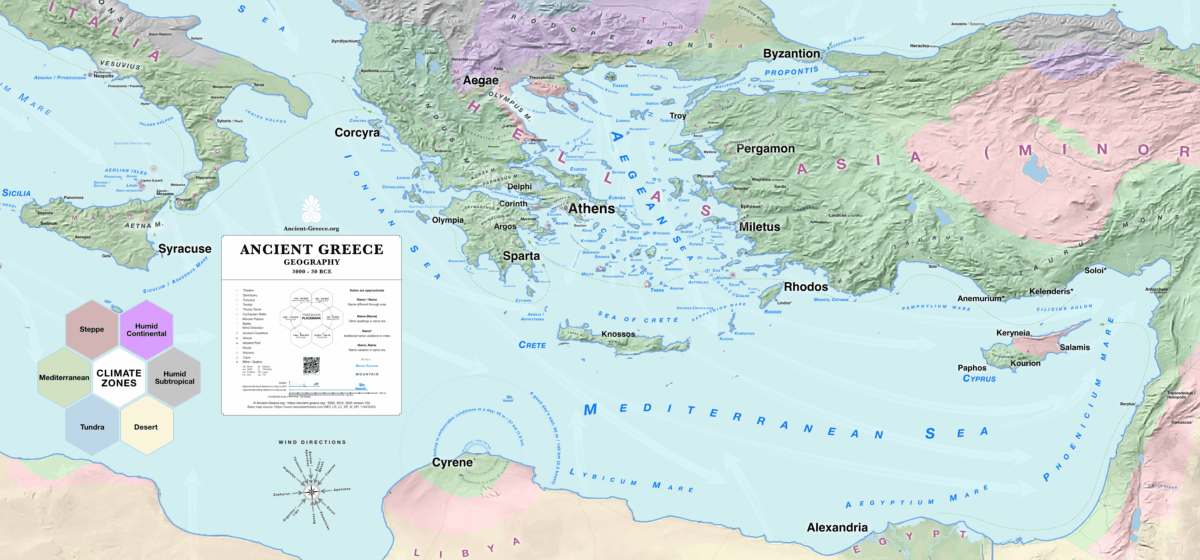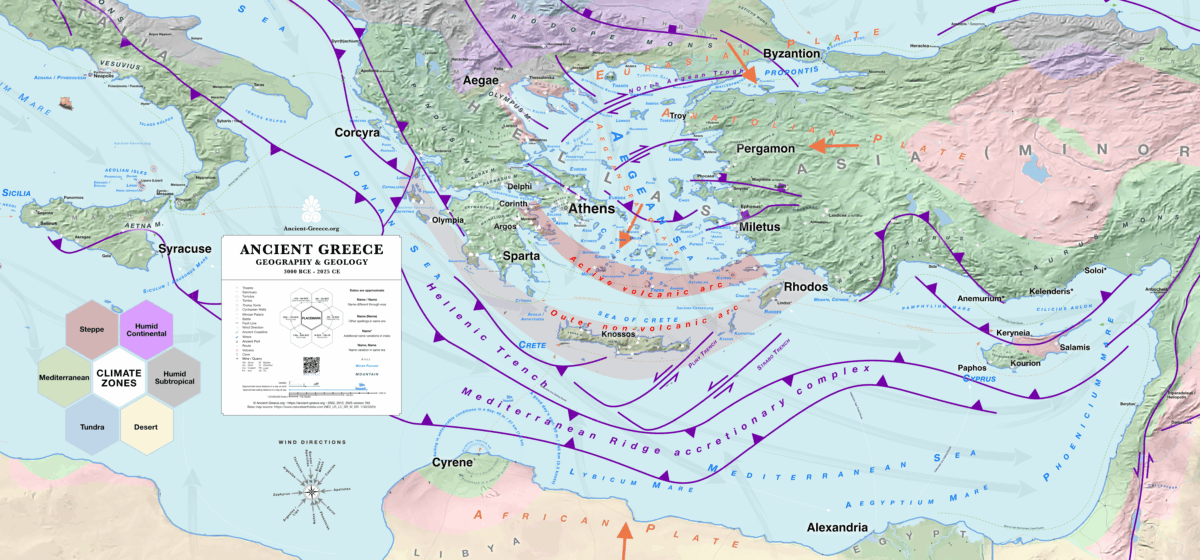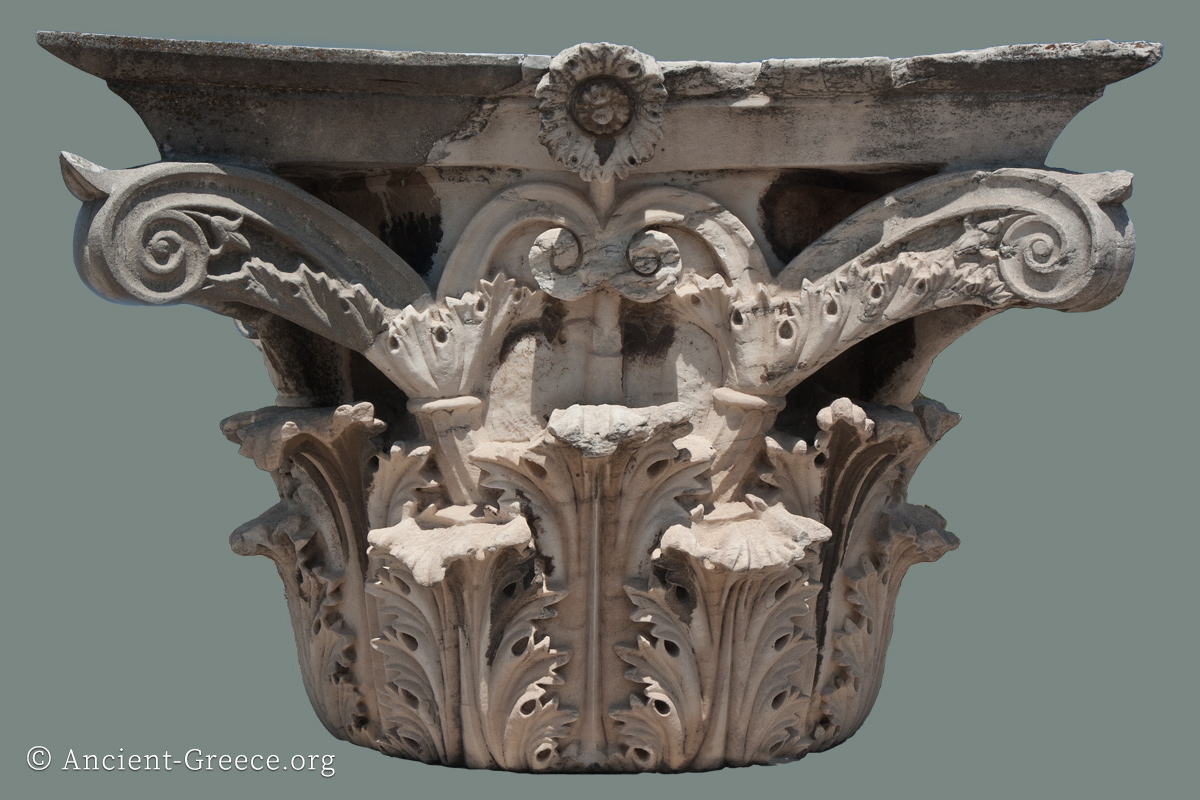
On this page:
The Mediterranean Sea
The position of Greece at the crossroads between Africa, Asia, and Europe has undeniably played a large role in its diverse and often turbulent history.

Protruding from Europe, Greece hangs precariously southward from the end of the Balkan Peninsula, and slices towards the Mediterranean Sea with dramatic mountain ranges, peninsulas, and thousands of large and small islands.
Over a period of a thousand years, Ancient Greece evolved from the early Iron Age maritime colonies across the Mediterranean, to a vast continental empire following the conquests of Alexander the Great.
The Mediterranean Sea offered an easily adaptable climate with mild winters and hot, dry summers, while the rugged mountains and coastline afforded multiple easily defensible positions. The harsh, mountainous land forced people to master the waves since the Neolithic Era.
Wind Patterns
The wind patterns of the Mediterranean profoundly shaped ancient history and culture, influencing everything from seasonal trade to military campaigns. In the era of sailing ships, prevailing winds were as critical to commerce and communication as mountains and valleys were to land travel.
The prevailing winds of the Mediterranean, the “Etesian” (today’s meltemia) annual seasonal winds of the Aegean, and the Skiron winds in today’s gulf of Lion, became sea lanes for commerce and culture for more than two thousand years.
Our map includes an approximate graphic representation of these wind patterns to illustrate their effect on the direction, speed, duration, and reach of ancient maritime travel.
Geology

Chapters
This history of Ancient Greece is divided into the following chapters:
- Timeline
- Introduction
- Overview
- Geography
- Stone Age
- Bronze Age
- Dark Ages
- Archaic Era
- Classical Era
- Hellenistic Era
Related Pages





